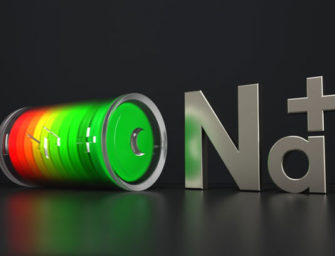JPMorgan Embraces Fintech
Fending off the growing challenge from payment start-ups operating in the traditional banking space, JPMorgan is repositioning itself as a tech company
Fending off the growing challenge from payment start-ups operating in the traditional banking space, JPMorgan has invested in a digital payment network, clearXchange, and is set to launch a smartphone peer-to-peer payment app. The move is part of the bank’s wider directive to push into fintech; an image it is keen to promote as it announced to shareholders at a recent investor day that it’s transitioning into a tech company.
The clearXchange network sees JPMorgan join a further six banks, BB&T, Wells Fargo, PNC Financial Services Group, Capital One, Bank of America, and US Bancorp, as the biggest traditional banks in the US band together to protect their interests. Bank of America was the first to launch the app last year, and JPMorgan’s app is expected to launch this summer.
Fintech start-ups attack traditional payments market
These tech developments are particularly important for the traditional banks as their customer base shifts online. Last year, according to Javelin Strategy & Research, individuals transferred $200 billion to one another using mobile phones and computers. For banks to guarantee their continuing dominance in the payments market, they need to secure the support of the millennials who are entering their prime banking years, saving and borrowing.
However, over the last years, traditional banks have been occupied elsewhere, focused on losses and slow growth following the financial crisis, rather than adapting to new digital behaviours. Fintech start-ups, which are now giants such as Square and PayPal, used the opportunity to attack the market, and changed the industry’s role as a payment intermediary.
CB Insights reports that total funding for payments companies reached record highs of about $3.8 billion in 2015. A second CB Insights report in collaboration with KPMG shows that in the same year the number of $50 million plus fintech deals reached more than 60.
Venmo, a subsidiary of PayPal, processed $7.5 billion in peer-to-peer payments last year. And while this was significantly less than the $22 billion digitally transferred by Bank of America customers or the $20 billion transferred by Chase QuickPay (JPMorgan’s online payments service), the figure represents an increase of more than 200% year on year, signalling rapid growth.
Analysts say that there is a narrow window of opportunity where the traditional banks may be able to make up for lost ground – but they need to produce something which is fast, functional, and user-friendly.
Can banks catch up with fintech start-ups?
The clearXchange network seems to fulfill many of those functions. Firstly, traditional banks hold an advantage by controlling how quickly money can move between accounts. All start-up fintech companies rely on banks to make sure money is available for transfer and then transfer it, and this can currently take three or four days. ClearXchange, instead, is an instant money transfer network, which will allow individuals banking with any of the seven traditional banks involved in the network to send money to another person’s account instantaneously.
“What we are doing now is delivering payments in real time, which is what our customers have asked for,” states Mary Harman, managing director for payments at Bank of America. She continues: “As a Bank of America customer, when I hit send, a couple of seconds later the US Bank customer will see the money in their account.”
ClearXchange also brings together the largest US banks (as ranked by deposits, representing two thirds of deposits). And any US bank or credit union can also participate making it widely functional and user-friendly. But, it will need to reach a critical mass of participants if it is to really take hold.

eATM
eATMs
As part of its mobile money bid, JPMorgan is also set to launch eATMs, cardless cash machines that require only an app to make withdrawals. The JPMorgan eATMs will function with both Apple Pay or a Chase cardless authentication code. The new machines will also triple the withdrawal limit to $3,000, trying to broaden appeal. Michael Fusco, a JPMorgan spokesperson, commented: “We analysed withdrawals occurring at our teller lines and found that 90 to 95 percent of withdrawals are under $3,000, so setting the limit there would allow the devices to serve the vast majority of our customers”.
Not only is this move from tellers to mobile banking seen as attractive to mobile millennials, JPMorgan itself is also expected to save money; it costs 65 cents to make a deposit with a teller, 8 cents at an ATM, and only 3 cents through a mobile app.
The bank has been testing out the eATMs at specific branches since last year, and plans to roll out the machines across the country later this year. And so, although JPMorgan has been a little late to the table, with two new innovations out this year it seems the bank is working hard to reposition itself as fintech now.
















There are no comments
Add yours